Stable fly
Stomoxys calcitrans
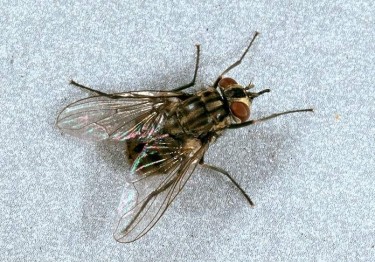
The stable fly develops near farms. It bites animals to feed on blood and its bites are painful. This fly is a major nuisance because it carries many pathogens and stresses animals.
Stable fly
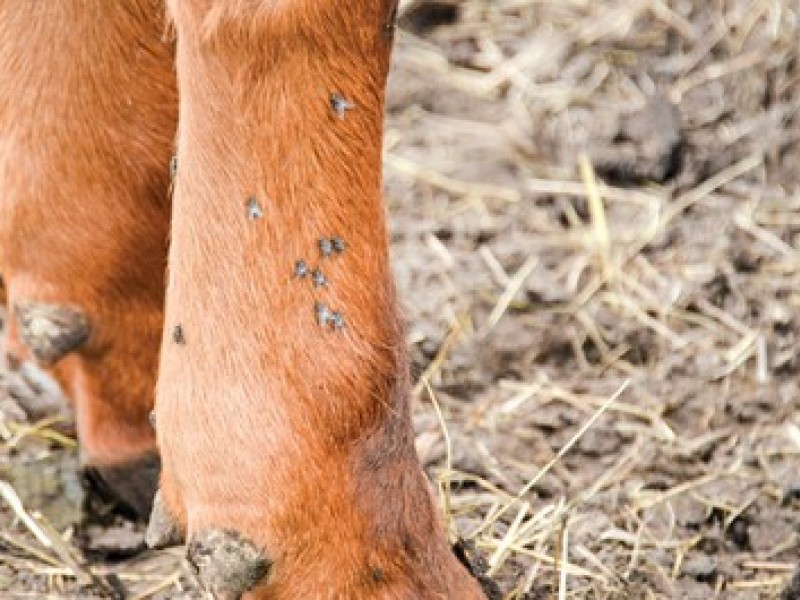
Life cycle
Stomoxys flies have a holometabolous development cycle including an egg, larvae, pupa, and adults. Males and females are hematophagous. Females are able to lay eggs a few days after mating. Several layings can follow each other, each time releasing 80 to 100 eggs per laying. A blood meal is performed between each spawning. Eggs are laid in wet areas on feeder substrates for the larvae. These can be either manure (mixture of straw and organic matter) or plant waste (plant cuttings, straw).
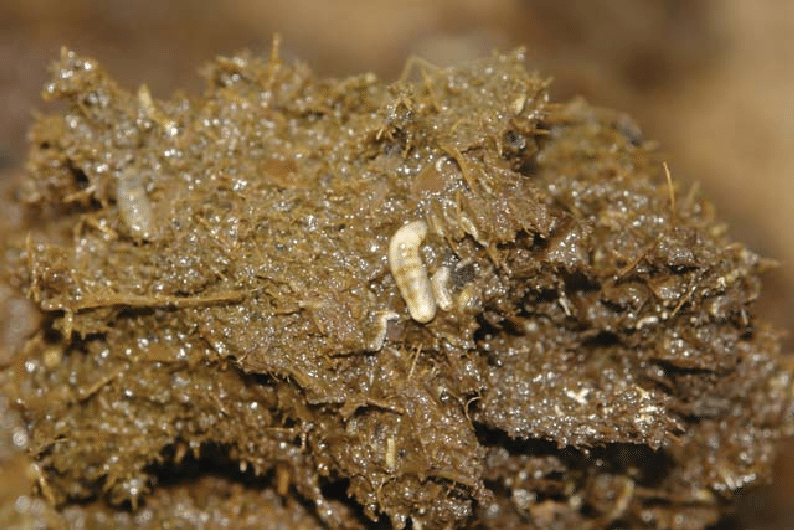
Identification
Egg: about 1 mm long, white, elongated, laid in clusters.
Larva:the neonate larva measures 1.25 mm (1st stage) and will undergo 2 molts to reach up to 11-12 mm (3rd stage). From light yellow to creamy white, the larvae or maggots have 2 posterior spiracles to allow them to breathe.
Pupa:at maturity the maggots achieve their metamorphosis in the form of a pupa. This 4.5 to 6 mm long pupa is brownish in color.
Adult: length from 5 to 7 mm, same shape and dimensions as the house fly. However, it is easily recognizable thanks to the presence of a proboscis, a sort of elongated and rigid tube allowing blood to be drawn.
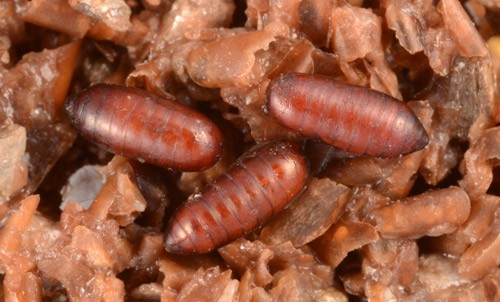
Natural habitat and behavior
The stable fly is not limited to a single host, it can draw blood from most warm-blooded animals. Cattle, horses are preferred but goats, sheep, domestic animals such as dogs are also hosts. Humans can also be bitten. The larvae develop in decomposing moist fibrous substrates containing a vegetable fraction. Examples include straw, grass or damp hay bedding, horse manure, cow dung and crop by-products. Stable flies have a great ability to spread from farm to farm up to a radius of 5 km. They mainly bite the legs, back and belly of large animals and the ears, head and legs of small animals. In hot weather, they feed in the early morning and late afternoon and can completely gorge themselves with blood within 5 minutes if left undisturbed. They often rest under vegetation, fences and other structures near their hosts. Their population peak is often observed in spring and autumn depending on the region.
Nuisance/
economical damage
Stable flies are a big nuisance to livestock. They are vectors of many pathogens and their bites are very painful. Repeated bites increase animal stress and reduce feeding time, causing weight loss and reduced production. In 2012, an American estimate showed that the total impact of stable flies created several million dollars of loss per year in the livestock industry in the United States. Feeding on the blood of animals, stable flies are vectors of viruses, bacteria, protozoa and helminths.
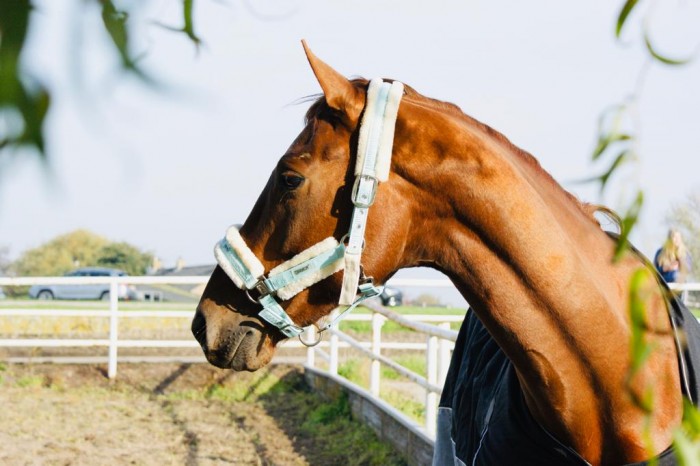
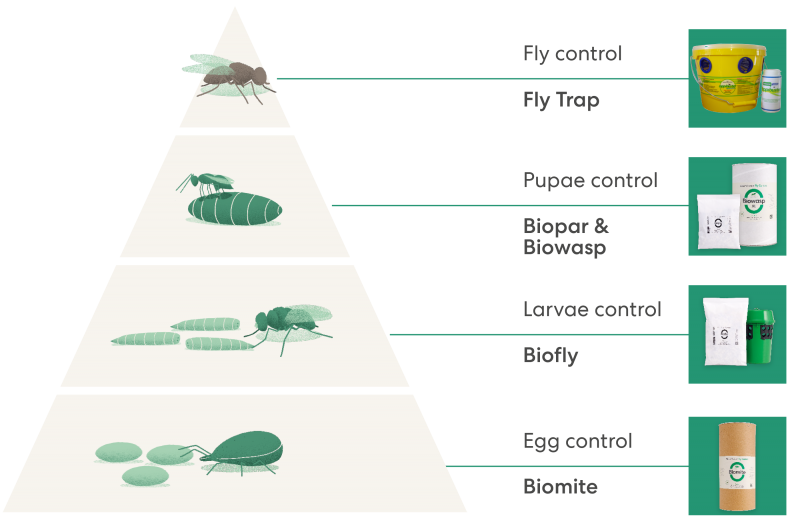
Get in touch
A successful approach to biological fly control isbased on strategically planned releases.
Pleasecontact us to discuss the possibilities.

